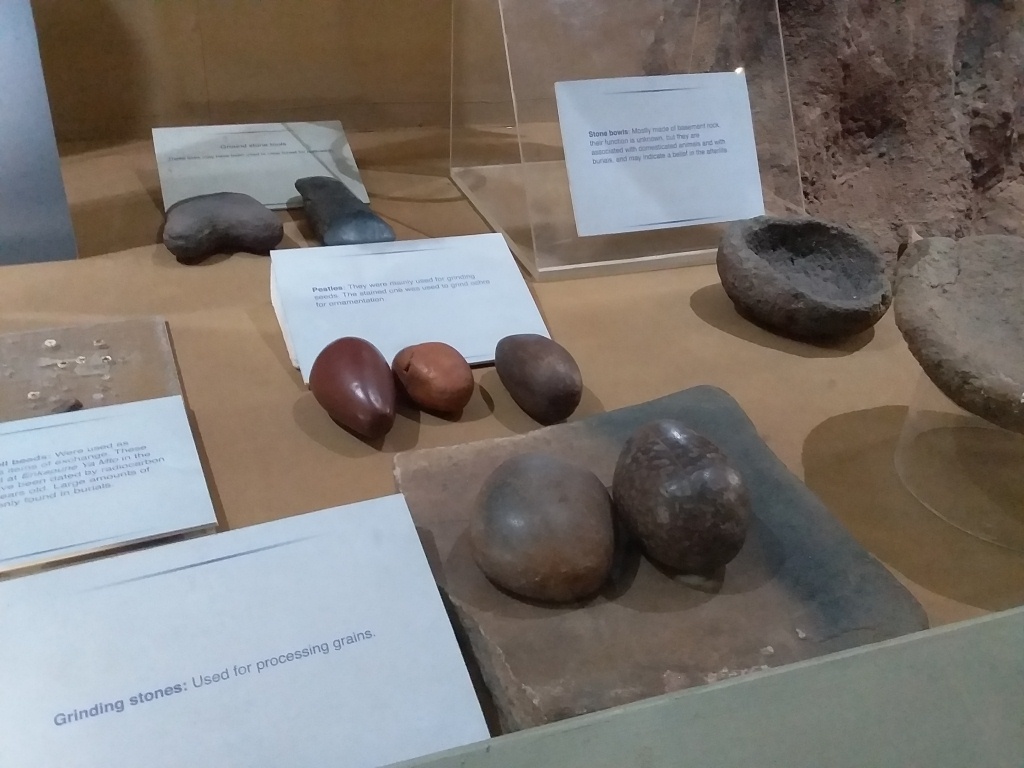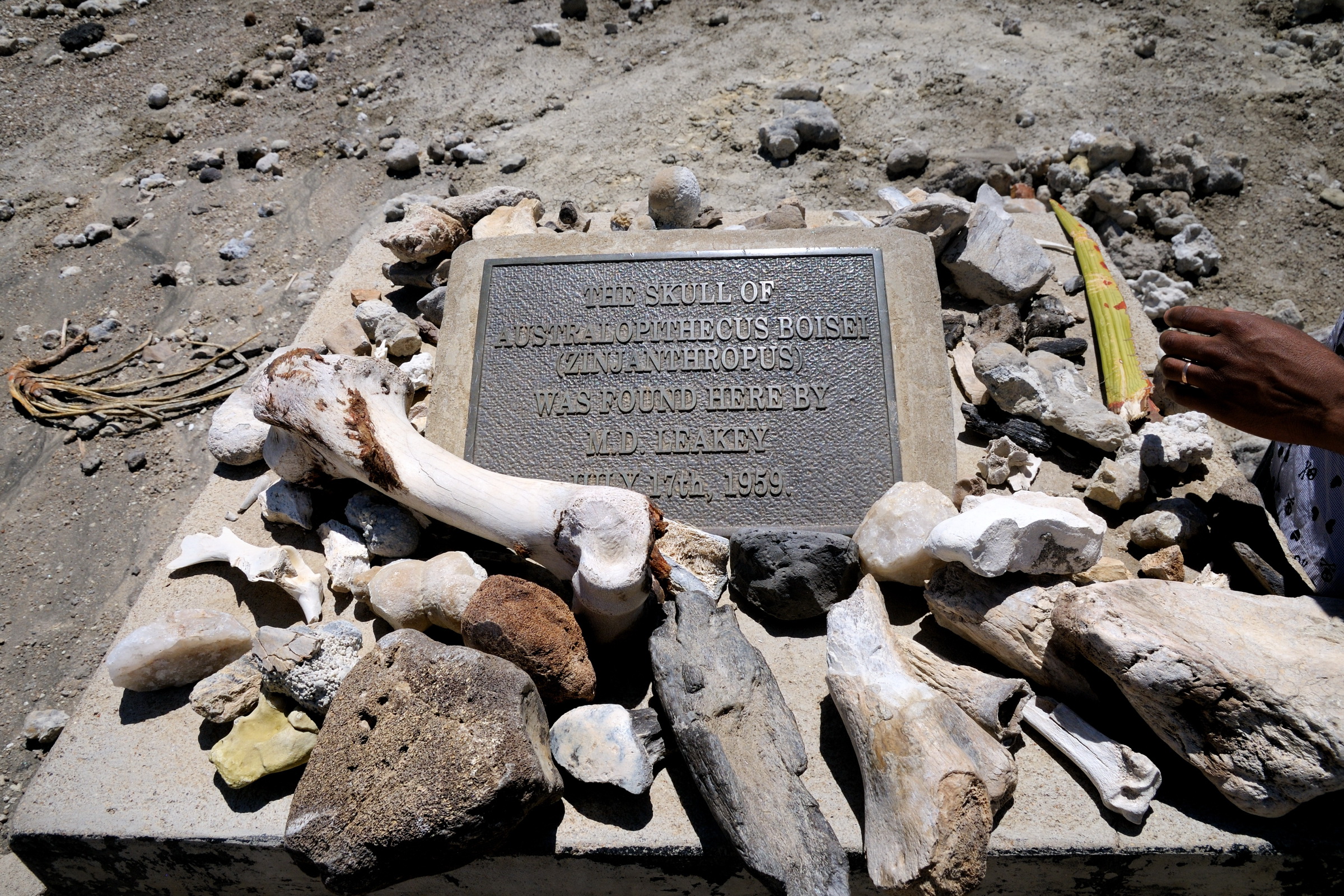|
Elmenteitan
The Elmenteitan culture was a prehistoric lithic industry and pottery tradition with a distinct pattern of land use, hunting and pastoralism that appeared and developed on the western plains of Kenya, East Africa during the Pastoral Neolithic c.3300-1200 BP. It was named by archaeologist Louis Leakey after Lake Elmenteita (also ''Elementaita''), a soda lake located in the Great Rift Valley, about northwest of Nairobi. History of research The Elmenteitan was first described by Louis Leakey from excavations at Gamble's Cave (the type site) in 1931 and Njoro River Cave in 1938. Leakey had noticed a locally distinct cluster of the lithic industry and a universal pottery tradition in a restricted area on the plains west of the central Great Rift Valley and at the Mau Escarpment. Sites and society Elmenteitan sites are found between the central Rift Valley and the western Lake Victoria Basin of Kenya. The occupants of all these sites used obsidian sourced from Mount Eburu. They ... [...More Info...] [...Related Items...] OR: [Wikipedia] [Google] [Baidu] |
Elmenteitan Pendant
The Elmenteitan culture was a prehistoric lithic industry and pottery tradition with a distinct pattern of land use, hunting and pastoralism that appeared and developed on the western plains of Kenya, East Africa during the Pastoral Neolithic c.3300-1200 BP. It was named by archaeologist Louis Leakey after Lake Elmenteita (also ''Elementaita''), a soda lake located in the Great Rift Valley, about northwest of Nairobi. History of research The Elmenteitan was first described by Louis Leakey from excavations at Gamble's Cave (the type site) in 1931 and Njoro River Cave in 1938. Leakey had noticed a locally distinct cluster of the lithic industry and a universal pottery tradition in a restricted area on the plains west of the central Great Rift Valley and at the Mau Escarpment. Sites and society Elmenteitan sites are found between the central Rift Valley and the western Lake Victoria Basin of Kenya. The occupants of all these sites used obsidian sourced from Mount Eburu. They le ... [...More Info...] [...Related Items...] OR: [Wikipedia] [Google] [Baidu] |
Elmenteitan Grinding Stone And Pestles
The Elmenteitan culture was a prehistoric lithic industry and pottery tradition with a distinct pattern of land use, hunting and pastoralism that appeared and developed on the western plains of Kenya, East Africa during the Pastoral Neolithic c.3300-1200 BP. It was named by archaeologist Louis Leakey after Lake Elmenteita (also ''Elementaita''), a soda lake located in the Great Rift Valley, about northwest of Nairobi. History of research The Elmenteitan was first described by Louis Leakey from excavations at Gamble's Cave (the type site) in 1931 and Njoro River Cave in 1938. Leakey had noticed a locally distinct cluster of the lithic industry and a universal pottery tradition in a restricted area on the plains west of the central Great Rift Valley and at the Mau Escarpment. Sites and society Elmenteitan sites are found between the central Rift Valley and the western Lake Victoria Basin of Kenya. The occupants of all these sites used obsidian sourced from Mount Eburu. They le ... [...More Info...] [...Related Items...] OR: [Wikipedia] [Google] [Baidu] |
Ngamuriak
Ngamuriak is an archaeological site located in south-western Kenya. It has been interpreted as an Elmenteitan Pastoral Neolithic settlement. The excavation of this site produced pottery sherds, stone tools with obsidian fragments and obsidian blades, along with large amounts of animal bones. Location Ngamuriak is located in what is now south-western Kenya, 3 kilometers east of the Lemek village. The site sits on a large and open plain that is covered in vegetation such as dwarf shrubs and grass. The area wildlife includes wildebeest, giraffes, gazelle, zebras, impalas, and warthogs. Excavation Three seasons of excavation occurred at Ngamuriak, from July to October in 1981, November to December in 1984, and in April to May of the following year in 1985. The excavation itself was conducted using a grid system for the mapping, while trenches were dug in various sizes ranging from 2m x2m to almost 60 square meters. The first series of excavations were done with 2m x 2m trenches tha ... [...More Info...] [...Related Items...] OR: [Wikipedia] [Google] [Baidu] |
Gogo Falls
Gogo Falls is an archaeological site near a former and since 1956 dammed waterfall, located in the Lake Victoria Basin in Migori County, western Kenya. This site is important to archaeology as it includes some of the earliest appearances of artifacts and domestic animals in the area. The findings at the site help to reconstruct the later prehistory around Lake Victoria, including a Pastoral Neolithic occupation by Elmenteitan peoples and a later Iron Age occupation. Artifacts found at the site included pottery and iron artifacts. Through these artifacts some of the cultural traditions of the people who lived near Gogo Falls were discovered. Location and environmental setting Gogo Falls is located in the Lake Victoria Basin in Kenya. Gogo Falls is located on the Kanyamkago Hillside near the modern dam on the West bank of Gucha River (also known as Kuja River). The Kanyamkago Hills were formed out of Pre-Cambrian rocks. The modern dam is fairly close to Gogo Falls but it did not f ... [...More Info...] [...Related Items...] OR: [Wikipedia] [Google] [Baidu] |
Savanna Pastoral Neolithic
The Savanna Pastoral Neolithic (SPN; formerly known as the Stone Bowl Culture) is a collection of ancient societies that appeared in the Rift Valley of East Africa and surrounding areas during a time period known as the Pastoral Neolithic. They were South Cushitic speaking pastoralists who tended to bury their dead in cairns, whilst their toolkit was characterized by stone bowls, pestles, grindstones and earthenware pots. Through archaeology, historical linguistics and archaeogenetics, they conventionally have been identified with the area's first Afroasiatic-speaking settlers. Archaeological dating of livestock bones and burial cairns has also established the cultural complex as the earliest center of pastoralism and stone construction in the region. Overview The makers of the Savanna Pastoral Neolithic culture are believed to have arrived in the Rift Valley sometime during the Pastoral Neolithic period (c. 3,000 BCE-700 CE). Through a series of migrations from Horn of Africa ... [...More Info...] [...Related Items...] OR: [Wikipedia] [Google] [Baidu] |
Pastoral Neolithic
The Pastoral Neolithic (5000 BP - 1200 BP) refers to a period in Africa's prehistory, specifically Tanzania and Kenya, marking the beginning of food production, livestock domestication, and pottery use in the region following the Later Stone Age. The exact dates of this time period remain inexact, but early Pastoral Neolithic sites support the beginning of herding by 5000 BP. In contrast to the Neolithic in other parts of the world, which saw the development of farming societies, the first form of African food production was nomadic pastoralism, or ways of life centered on the herding and management of livestock. The shift from hunting to food production relied on livestock that had been domesticated outside of East Africa, especially North Africa. This period marks the emergence of the forms of pastoralism that are still present. The reliance on livestock herding marks the deviation from hunting-gathering but precedes major agricultural development. The exact movement tendencies ... [...More Info...] [...Related Items...] OR: [Wikipedia] [Google] [Baidu] |
Njoro River Cave
Njoro River Cave is an archaeological site on the Mau Escarpment, Kenya, that was first excavated in 1938 by Mary Leakey and her husband Louis Leakey. Excavations revealed a mass cremation site created by Elmenteitan pastoralists during the Pastoral Neolithic roughly 3350-3050 BP. Excavations also uncovered pottery, beads, stone bowls, basket work, pestles and flakes. The Leakeys' excavation was one of the earliest to uncover ancient beads and tools in the area and a later investigation in 1950 was the first to use radiocarbon dating in East Africa. Dating The Njoro River Cave was the place of first use of radiocarbon dating in East Africa. Though the Leakeys only made a single observation in 1950, later tests were conducted in the 1980s. Results from four total radiocarbon dates cluster at 3350-3050 BP. Cremation and burial Seventy-eight individuals were originally recovered. While there is nothing that would suggest the items were only left for certain genders, the numbe ... [...More Info...] [...Related Items...] OR: [Wikipedia] [Google] [Baidu] |
Louis Leakey
Louis Seymour Bazett Leakey (7 August 1903 – 1 October 1972) was a Kenyan-British palaeoanthropologist and archaeologist whose work was important in demonstrating that humans evolved in Africa, particularly through discoveries made at Olduvai Gorge with his wife, fellow palaeoanthropologist Mary Leakey. Having established a programme of palaeoanthropological inquiry in eastern Africa, he also motivated many future generations to continue this scholarly work. Several members of the Leakey family became prominent scholars themselves. Another of Leakey's legacies stems from his role in fostering field research of primates in their natural habitats, which he saw as key to understanding human evolution. He personally focused on three female researchers, Jane Goodall, Dian Fossey, and Birutė Galdikas, calling them The Trimates. Each went on to become an important scholar in the field of primatology. Leakey also encouraged and supported many other PhD candidates, most notably from ... [...More Info...] [...Related Items...] OR: [Wikipedia] [Google] [Baidu] |
University Of Nairobi
, mottoeng = In unity and work , image = Uon emblem.gif , image_size = 210px , caption = Coat of Arms of the University , type = Public , endowment = , undergrad = 70,000 , postgrad = 12,424 , chancellor = Dr. Vijoo Rattansi , vice_chancellor = Professor Stephen Kiama , campus = Urban , city = Nairobi , affiliations = ACU , colors = Sky blue , website = , state = , country = Kenya , coor = The University of Nairobi (uonbi or UoN; ) is a collegiate research university based in Nairobi. It is the largest university in Kenya. Although its history as an educational institution dates back to 1956, it did not become an independent university until 1970. During that year, the University ... [...More Info...] [...Related Items...] OR: [Wikipedia] [Google] [Baidu] |
Mary Leakey
Mary Douglas Leakey, FBA (née Nicol, 6 February 1913 – 9 December 1996) was a British paleoanthropologist who discovered the first fossilised ''Proconsul A proconsul was an official of ancient Rome who acted on behalf of a consul. A proconsul was typically a former consul. The term is also used in recent history for officials with delegated authority. In the Roman Republic, military command, or ...'' skull, an extinct ape which is now believed to be ancestral to humans. She also discovered the robust ''Zinjanthropus'' skull at Olduvai Gorge in Tanzania, eastern Africa. For much of her career she worked with her husband, Louis Leakey, at Olduvai Gorge, where they uncovered fossils of ancient hominines and the earliest hominins, as well as the stone tools produced by the latter group. Mary Leakey developed a system for Taxonomy (general), classifying the stone tools found at Olduvai. She discovered the Laetoli#Hominin footprints, Laetoli footprints, and at the Laetoli s ... [...More Info...] [...Related Items...] OR: [Wikipedia] [Google] [Baidu] |
Avulsion Injury
In medicine, an avulsion is an injury in which a body structure is torn off by either trauma or surgery (from the Latin ''avellere'', meaning "to tear off"). The term most commonly refers to a surface trauma where all layers of the skin have been torn away, exposing the underlying structures (i.e., subcutaneous tissue, muscle, tendons, or bone). This is similar to an abrasion but more severe, as body parts such as an eyelid or an ear can be partially or fully detached from the body. Skin avulsions The most common avulsion injury, skin avulsion often occurs during motor vehicle collisions. The severity of avulsion ranges from skin flaps (minor) to degloving (moderate) and amputation of a finger or limb (severe). Suprafascial avulsions are those in which the depth of the removed skin reaches the subcutaneous tissue layer, while subfascial avulsions extend deeper than the subcutaneous layer.Jeng, S.F., & Wei, F.C. (1997, May). Classification and reconstructive options in foot plant ... [...More Info...] [...Related Items...] OR: [Wikipedia] [Google] [Baidu] |
Kenya
) , national_anthem = "Ee Mungu Nguvu Yetu"() , image_map = , map_caption = , image_map2 = , capital = Nairobi , coordinates = , largest_city = Nairobi , official_languages = Constitution (2009) Art. 7 ational, official and other languages"(1) The national language of the Republic is Swahili. (2) The official languages of the Republic are Swahili and English. (3) The State shall–-–- (a) promote and protect the diversity of language of the people of Kenya; and (b) promote the development and use of indigenous languages, Kenyan Sign language, Braille and other communication formats and technologies accessible to persons with disabilities." , languages_type = National language , languages = Swahili , ethnic_groups = , ethnic_groups_year = 2019 census , religion = , religion_year = 2019 census , demonym = ... [...More Info...] [...Related Items...] OR: [Wikipedia] [Google] [Baidu] |


.jpg)



